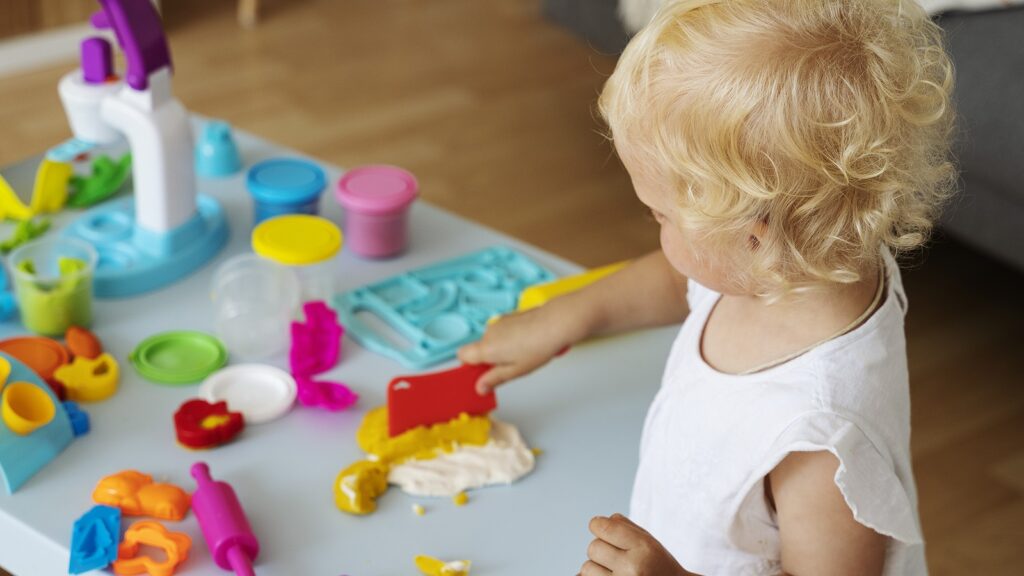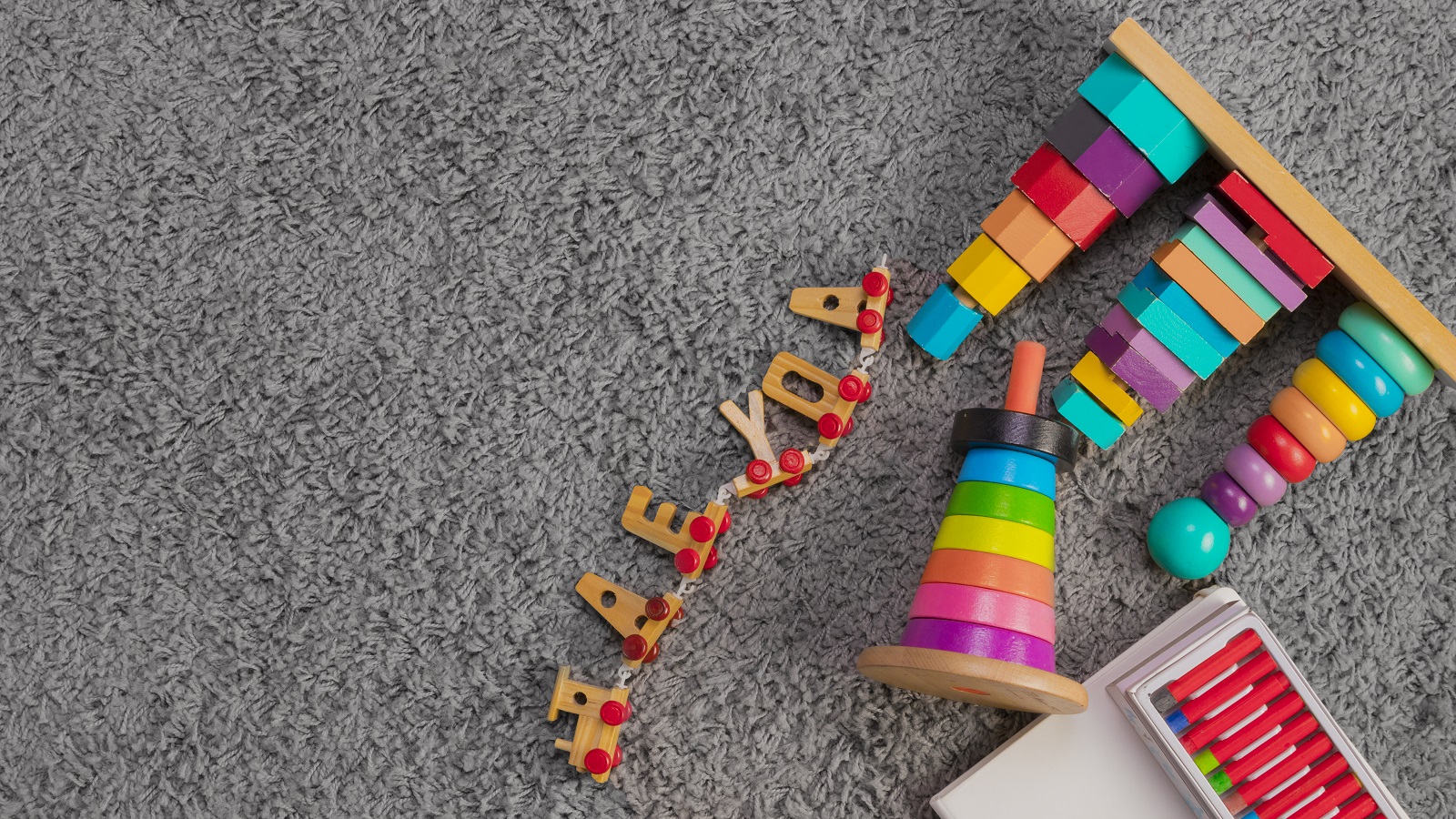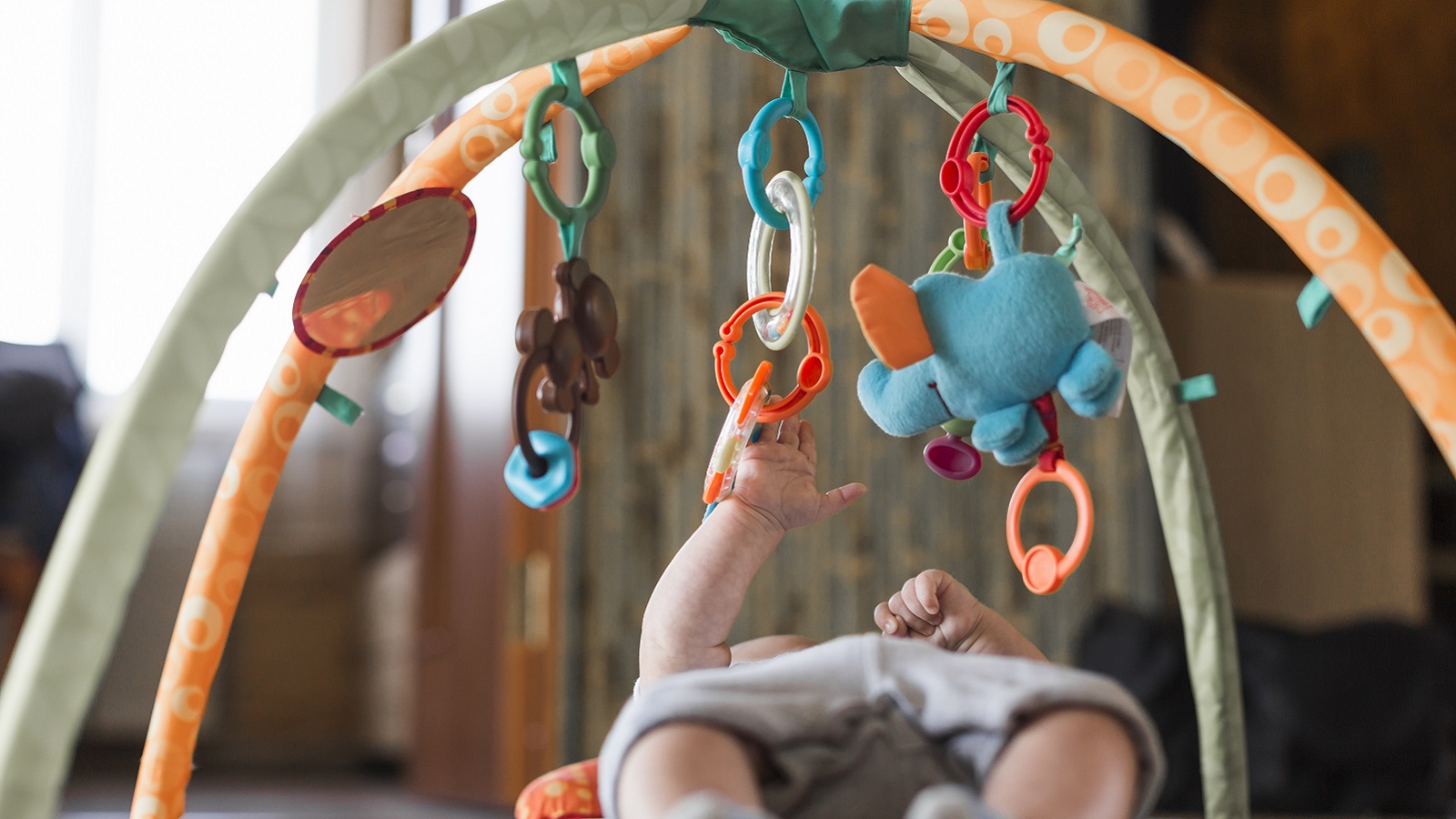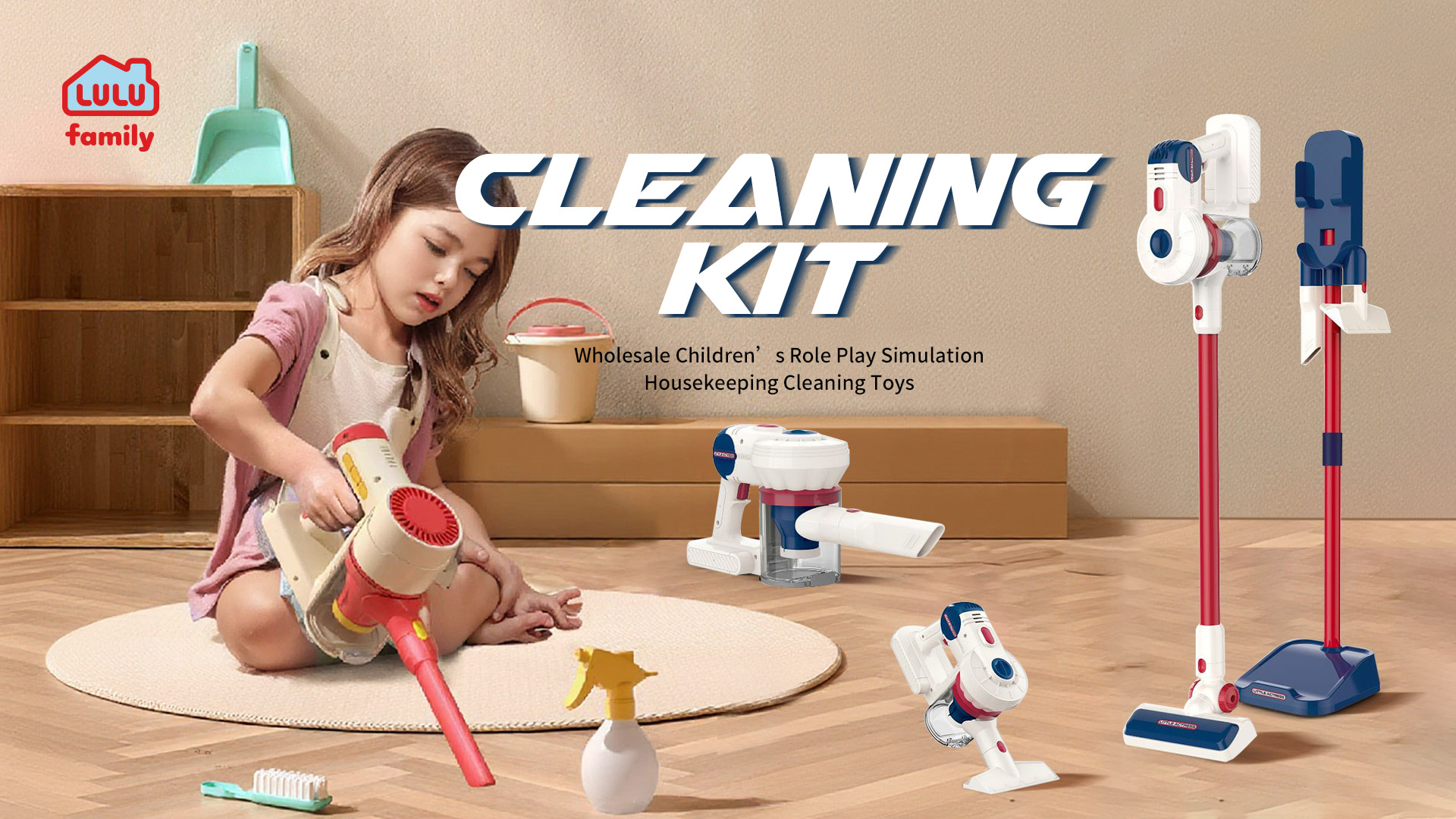El método de educación montessori tiene una historia de más de cien años y sigue siendo un modelo educativo reconocido mundialmente. Su esencia radica en despertar la motivación inherente de los niños para aprender en lugar de obligarlos a aceptar el conocimiento..
Si desea proporcionar el material didáctico Montessori correspondiente a medida que su hijo crece, y elige juguetes Montessori adecuados, Es necesario tener cierta comprensión y fundamento de los métodos educativos de Montessori..
El método Montessori fue desarrollado por el educador italiano Dr.. María Montessori, basándose en sus experiencias de vida.
La esencia de este método radica en fomentar el espíritu de aprendizaje y exploración consciente y proactivo del niño.. La educación Montessori utiliza una amplia gama de materiales didácticos., todo adaptado a las etapas de desarrollo de los niños.
La educación Montessori abarca la vida diaria, desarrollo sensorial, matemáticas, idioma, ciencia, y cultura.
Los niños desarrollan su personalidad a través de la manipulación repetitiva de enseñanza montessori juguetes, Desarrollando así diversas habilidades a través de la libre exploración y manipulación..
Si desea proporcionar el material didáctico Montessori correspondiente a medida que su hijo crece, y elige juguetes Montessori adecuados, Es necesario tener cierta comprensión y fundamento de los métodos educativos de Montessori..

Filosofía Educativa Montessori
La filosofía educativa Montessori se puede resumir de la siguiente manera:
1. Ayudar al ser humano a convertirse en persona
La educación Montessori ayuda al ser humano a convertirse en persona. El ser humano es el individuo biológico al nacer.. Ser persona es educarse, nutrido, y poseer una personalidad. Este es el significado de la educación Montessori: Sólo a través de la formación de la personalidad se puede llegar a ser una verdadera persona..
2. Inteligencia espontánea
El deseo de aprender está impulsado por la inteligencia innata: el impulso inherente del niño a buscar conocimiento y desarrollo.. Si este impulso interior no se activa a través de la educación, La inmensa energía inherente del niño se estancará y se desperdiciará..
3. Creatividad humana
De hecho, esto puede considerarse un rasgo humano natural; La creatividad es algo natural para los humanos.. Montessori creía que la coordinación constante de la actividad manual y el lenguaje, en última instancia, fomenta la personalidad del niño., que luego desarrolla diversas habilidades creativas a medida que se desarrolla la personalidad..
4. Ayudar a los niños en su autodesarrollo
La educación tradicional implica que los adultos instruyan constantemente a los niños sobre qué hacer., y los niños simplemente obedecen. educación montessori, por otro lado, permite a los niños liberar su propio potencial y desarrollarse en todos los aspectos a través de prácticas, actividades personales. Este es el verdadero significado de la educación..
5. Ambiente preparado
Montessori creía que el medio ambiente es un ser vivo., preparado por adultos con una comprensión clara del propósito del niño. Este entorno abarca todos los elementos positivos necesarios para el crecimiento de un niño., al mismo tiempo que elimina cualquier elemento que sea perjudicial para el crecimiento del niño..
Tres etapas de la educación Montessori
El método Montessori divide la educación del niño en tres etapas: desarrollo de la primera infancia (0-3 años), aprendizaje independiente (3-6 años), y aprendizaje especializado (6-12 años). Cada etapa tiene diferentes características y objetivos., y utiliza los métodos de enseñanza correspondientes para promover el crecimiento y el aprendizaje de los niños..
Fase 1: 0-3 años de entrenamiento infantil
Durante esta etapa, La educación Montessori se centra en el desarrollo de los sentidos de los niños., habilidades motoras finas, y habilidades lingüísticas.
La educación Montessori cree que el cerebro de la primera infancia es más activo y receptivo al conocimiento., y por lo tanto se le debe proporcionar abundante estimulación y experiencias.. Durante esta etapa, La observación y la orientación son esenciales., Se deben crear entornos desafiantes para fomentar la exploración y el aprendizaje independientes..
Entre las edades de 0 y 1, Los niños aprenden principalmente sobre el mundo a través de sus sentidos.. Exploran su entorno a través de la vista., audiencia, gusto, y tocar.
Los ambientes Montessori ofrecen una variedad de objetos con diferentes texturas., colores brillantes, y formas, como juguetes de peluche suaves, bloques de construcción lisos, y sonando campanas. Se anima a los niños a tocar, comprender, y sacude estos objetos, estimulando sus sentidos del tacto, visión, y escuchando.
Niños de edad 1-2 comienzan a desarrollar más control sobre sus movimientos y disfrutan caminar, escalada, y manipular objetos. Las aulas Montessori a esta edad suelen contar con áreas dedicadas a actividades, como pequeñas escaleras, diapositivas, y bloques de construcción, para satisfacer las necesidades de desarrollo motor de los niños.
También proporcionan herramientas sencillas de cuidado personal, como tocadores., cucharas, y tazas para ayudar a los niños a aprender habilidades básicas para la vida, como vestirse y alimentarse solos., fomentando la independencia.
A la edad de dos o tres años, Las habilidades lingüísticas de los niños se desarrollan rápidamente., y comienzan a desarrollar sus propias ideas y expresiones.. Los maestros Montessori participan en una extensa comunicación lingüística con los niños, contándoles cuentos y cantándoles canciones infantiles.
El aula también está equipada con una variedad de ayudas para la enseñanza de idiomas., como tarjetas del alfabeto, rompecabezas, y libros ilustrados, Estimular el interés de los niños por el lenguaje y sentar las bases para la lectura y la escritura en el futuro..
Fase 2: Aprendizaje independiente para 3-6 años
En esta etapa, La educación Montessori enfatiza el aprendizaje independiente y el autodesarrollo. Observando las necesidades e intereses de cada niño., Se proporcionan ambientes y materiales de aprendizaje apropiados..
Los niños aprenden a través de la elección independiente y la autogestión., Descubrir y dominar conocimientos y habilidades a través de una variedad de ayudas y materiales didácticos..
Niños de edad 3-4 entrar en una nueva etapa de desarrollo. Su capacidad de atención se vuelve más aguda., y se vuelven más curiosos sobre su entorno..
En un ambiente Montessori, Hay áreas sensoriales dedicadas que ofrecen diversas ayudas sensoriales., como paletas de colores, tableros táctiles, y saborear botellas, para ayudar a los niños a refinar aún más sus experiencias sensoriales y mejorar sus habilidades de observación y percepción.
La enseñanza de las matemáticas también se introduce paulatinamente durante esta etapa.. A través de ayudas matemáticas Montessori, como cajas de husos., tarjetas numéricas, y paneles de figuras geométricas, Los niños pueden comprender intuitivamente conceptos como cantidad., números, y formas, transición de la manipulación concreta al pensamiento matemático abstracto.
Niños de edad 4-5 comenzar a demostrar una mayor imaginación y creatividad. Las aulas Montessori fomentan el juego de roles, proporcionando accesorios como casas de muñecas, tiendas, y hospitales. Esto permite a los niños usar su imaginación e imitar la vida adulta., al mismo tiempo que desarrollan sus habilidades sociales y lingüísticas..
Los niños de esta edad también muestran un gran interés por el arte.. La educación Montessori ofrece actividades como pintura y manualidades., Permitir que los niños expresen libremente sus pensamientos y sentimientos..
Los maestros guían a los niños para que observen su entorno y los alientan a crear con una variedad de materiales y métodos., cultivar sus habilidades estéticas y creativas.
Niños de edad 5-6 están por ingresar a la escuela primaria y necesitan una preparación integral. La educación Montessori enfatiza el desarrollo de habilidades fundamentales, incluyendo la lectura, escribiendo, y aritmética.
Usar material didáctico como tableros de alfabeto de papel de lija y tarjetas pinyin., los niños aprenden a pronunciar y escribir letras. Usando cuentas de oro y tableros de suma, practican operaciones matemáticas para mejorar sus habilidades de cálculo.
Además, La educación Montessori se centra en cultivar la concentración de los niños, sentido del orden, e independencia, ayudarlos a hacer una transición sin problemas a la escuela primaria.
Fase 3: 6-12 años iniciar aprendizaje especializado
Durante esta etapa, La educación Montessori anima a los niños a participar en el estudio de materias específicas.. Los profesores proporcionan actividades y materiales específicos para cada materia., como las matemáticas, idioma, ciencia, geografía, etc.. Al mismo tiempo, Los maestros también ayudan a los niños a desarrollar el pensamiento crítico y las habilidades para resolver problemas..
Principios para elegir juguetes Montessori
La selección de juguetes Montessori debe seguir el núcleo de su filosofía educativa. – Promover el desarrollo independiente de los niños a través de experiencias sensoriales reales y ordenadas.. Deberíamos tener algunos principios de selección claves a la hora de elegir juguetes educativos Montessori.
1.Principios básicos
(1) Simulación y realismo
Dar prioridad a juguetes que simulen escenas de la vida real.. Por ejemplo, Los juguetes para cortar frutas deben tener texturas realistas. (como tallos de tomate y líneas de zanahoria) y retroalimentación operativa (como “hacer clic” efectos sonoros). Estos juguetes pueden ayudar a los niños a desarrollar la cognición y el pensamiento lógico mediante juegos de roles..
(2) Gradualidad y operatividad
Seleccionar material didáctico con niveles de dificultad adecuados que coincidan con la edad del estudiante.. Por ejemplo, libros ocupados (para entrenar habilidades para la vida como abotonarse y atar zapatos) o material didáctico cilíndrico (para comprender conceptos espaciales mediante la clasificación por altura) son adecuados para niños de edades 1-2 años. Niños de edad 3 y superiores pueden probar juguetes que requieran pensamiento lógico, como rompecabezas.
2. Requisitos de seguridad y detalle
Seguridad de materiales: Elija juguetes con esquinas redondeadas, sin rebabas, y certificaciones de seguridad, como un libro de fieltro o una máquina cortadora de plástico apto para uso alimentario.
Almacenamiento conveniente: Una canasta o contenedor de almacenamiento a juego puede ayudar a fomentar el sentido del orden en el niño. Por ejemplo, la máquina cortadora de frutas con pato de goma se puede almacenar completamente en una canasta.
3. Verificación de la Función Educativa
Desarrollo sensorial: Desarrollar a los niños a través de la estimulación multidimensional del tacto. (p.ej., diferentes materiales), visión (clasificación de colores), y escuchando (efectos sonoros).
Desarrollo de la Independencia: Elija juguetes que los niños puedan operar de forma independiente, como bloques para apilar números que se pueden unir y apilar en alto, para mejorar gradualmente la coordinación mano-ojo.
Selección de juguetes Montessori
Niños de edad 0 a 1
Para niños de edad 0 a 1, Los juguetes que proporcionamos deben ser un poco más grandes., no tóxico, fácil de desinfectar y limpiar, tener funciones simples, y ajustarse a las leyes del desarrollo físico de los niños.. Sólo así podrán desempeñar su mayor papel., y no ser sólo elementos que “liberar” adultos y niños para entretenimiento informal..
Alrededor de los tres meses, Podemos preparar una rejilla de gimnasio para bebés., colgar artículos de madera o algodón en distintos colores. Las madres con habilidades artesanales pueden hacer las suyas propias o comprar una..
El objetivo es ayudar a los bebés a desarrollar fuerza en los brazos., destreza de muñeca, toque con el dedo, y agarre. Cuando se combina con sonidos, También puede ayudarles a desarrollar su audición..
Después 3 meses, puedes proporcionar: bolas masticables de Manhattan, de madera sonajeros/badajos (madera sin pintar), palitos de dentición de frutas y verduras (para usar al agregar alimentos complementarios alrededor 6 meses), libros de tela, muñecos de tela/algodón, etc..
Hay muchos juguetes de este tipo en Internet.. Al elegir, Las madres deben tratar de seguir los estándares de: colores simples y sin complicaciones, sonidos suaves y poco irritantes, y un tamaño adecuado para proteger mejor la visión y el oído del bebé.
Los juguetes pequeños con piezas pequeñas no son adecuados para bebés en esta etapa.. Esto se debe a que están en la etapa de sensibilidad oral y aprenden sobre el mundo a través de la boca..
Para apoyar el crecimiento de sus dientes., Involuntariamente se llevarán objetos a la boca para sentir la suavidad., dureza, gusto, y temperatura de los objetos. Si hay objetos pequeños en el entorno circundante., Definitivamente será muy peligroso.
Además del período de sensibilidad oral., Las manos también se desarrollan durante este período.. A través de ejercicios de agarre y sensaciones táctiles., Los niños aprenden sobre todo lo que les rodea..
Si los padres pueden proporcionar a los niños objetos hechos de diversos materiales. (madera – duro, tela/muñecas – suave, plástico – luz, etc.) con diferentes sensaciones táctiles y presentárselas a través del lenguaje, Se beneficiarán enormemente tanto en el desarrollo del lenguaje cognitivo como en el desarrollo sensorial..

Niños de edad 1.5 a 4 años
Cuando los niños están cerca 1.5 a 4 años, entrarán en un periodo sensible de pequeñas cosas, autoconciencia, desarrollo de la creatividad, y un sentido de orden.
Los patrones y velocidades de desarrollo de cada niño son diferentes. Podemos decidir si proporcionamos artículos de asistencia relevantes. (juguetes) o fuerzas de apoyo basadas en el surgimiento de estos períodos sensibles.
Período de sensibilidad a objetos pequeños:
Los síntomas de este período incluyen curiosidad por los objetos pequeños de la vida diaria., que conduce al descubrimiento y la exploración. Los niños desarrollan interés por los pequeños insectos que hay en la tierra., hojas caídas, piedras fangosas, pequeños patrones en la ropa, pequeñas cuentas en el suelo, y objetos pequeños en juguetes. les gusta observar, descubriendo, y coleccionar estos objetos.
Bajo la premisa de garantizar la seguridad, Las madres pueden dar a sus hijos tiempo y libertad para observar., proteger su deseo de observar, aceptar su comportamiento, y no negar ni detener este asunto por razones de higiene u otras, porque es un buen momento para cultivar en los niños el hábito de prestar atención a los detalles y gestionarlos. “No molestar” en este momento también es una protección para la concentración de los niños.
Además, Podemos aprovechar la curiosidad de los bebés por las cosas pequeñas y luego ampliar los “tesoros” que han recogido para que puedan crecer más..
Por ejemplo, en términos de cognición: aprende los nombres de las plantas y las formas de varias hojas a partir de las hojas que recoges; familiarizarse con los nombres y hábitos de vida de los insectos en el suelo, y usar piedras cubiertas de tierra para aprender conceptos de tamaño y grados comparativos, etc..
En términos de habilidades motoras:
Podemos proporcionar cepillos para que los bebés “bañarse” piedras cubiertas de barro, preparar hermosas cuentas, Elige el tamaño de los agujeros según las habilidades de los niños., y luego dejar que los bebés ensarten las cuentas; durante estas actividades, nuestra coordinación mano-ojo, flexibilidad/cooperación de la mano, y se pueden practicar ejercicios de control.
Autoconciencia:
La llegada del período sensible de la autoconciencia marca el inicio de la autoconciencia del niño. Los niños disfrutan del pensamiento independiente y tienen ganas de experimentar.. Al participar en “eventos,” aprenden a entenderse a sí mismos, mejorar su comprensión de las relaciones con los demás, y generar confianza.
Aprovechando esta característica, Debemos proporcionar a los niños en esta etapa herramientas que desarrollen la destreza de los dedos., coordinación ojo-mano, fuerza de la mano, y creatividad.
Por ejemplo, Las tareas cotidianas incluyen verter agua., usando una cuchara, subiéndose los pantalones, y ponerse los zapatos.
Esto brinda a los niños más oportunidades para practicar y aprender a cuidar de sí mismos., construyendo su confianza. Los juguetes para martillar también son apropiados en esta etapa.; no sólo desarrollan la fuerza de las manos y la destreza de las muñecas, pero también proporciona una base para comprender la ley de conservación de la materia..
Similarmente, cuando los niños no pueden protegerse, Los adultos no sólo tienen la obligación y la responsabilidad de estar vigilantes y proteger a los niños., pero también debemos brindarles información de seguridad para que puedan aprender a protegerse.






